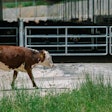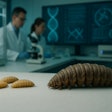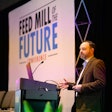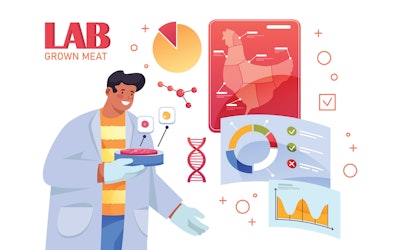
With regulatory approval achieved in Singapore and the U.S., the cultivated, or lab-grown, meat industry is taking off, with companies getting closer and closer to scaling up production.
But how is cultivated meat produced in the first place?
The ingredients
The fundamental ingredients “fed” to lab-grown meat are very similar to the nutritional requirements needed for live animals, according to the Good Food Institute, a leading nonprofit think tank working in the realm of alternative proteins.
The Good Food Institute lays out the common ingredients needed to grow cultivated meat in a lab.
Glucose: Glucose provides an energy source to the cell culture.
Amino acids: Amino acids create protein biomass, and some of the essential amino acids required for in vitro cell cultures include glutamine, lysine and tryptophan, as well as glycine which is necessary specifically for chickens.
Inorganic salts: Inorganic salts, like calcium chloride and sodium phosphate, maintain the osmotic concentration between the cell being grown and its culture medium.
Vitamins: A variety of vitamins contribute to cell growth like riboflavin (vitamin B2), folic acid (vitamin B9), biotin (vitamin B7) and many more.
Buffers: Buffering systems or agents like CO2-bicarbonate and HEPES (4-(2-hydroxyethyl)-1-piperazineethanesulfonic acid) help maintain the pH level of the culture medium.
Serum: Most commonly harvested from fetal cows, serum is a high-protein, proliferative mixture containing growth and attachment factors. 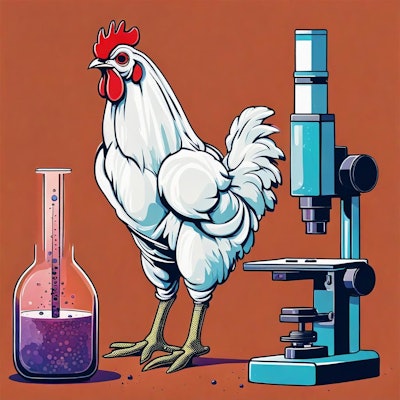 Emma Cottrell | AI-generated image
Emma Cottrell | AI-generated image
How it’s made
To achieve larger-scale production, cultivated meat is grown in large bioreactors that meet the environmental conditions for cell growth such as maintaining temperature, pH and stir speed, according to Professor David Kaplan, director of the Center for Cellular Agriculture and the Tissue Engineering Resource Center at Tufts University.
“The concept relates to creating ‘artificial conditions’ in the bioreactor to have the cells sense they are in the tissue environment that you are trying to generate (e.g., fat, muscle),” said Kaplan.
In other words, the bioreactors are meant to mimic in vivo conditions as close as possible to essentially deceive the cells into thinking they are still in an animal, allowing the cells to grow as they would traditionally.
The reliance on serum
As mentioned earlier, serum is a common ingredient needed to make lab-grown meat, but its usage also comes with a host of issues.
According to Kaplan, using serum is “very costly, and variable in content, thus reproducibility can be challenging, and it is also animal derived which is contrary to the goals of cultivated meat technology.”
Using animal serum is incredibly expensive, which hinders the possibility of larger-scale production and makes lab-grown meat inaccessible to most people.
What is also preventing larger-scale production is the fact that serum does not produce consistent results and researchers still do not know everything there is to know about serum’s components and how it works.
According to the Good Food Institute, “the composition [of serum] also varies by geographic region where a cow’s diet can vary, by batch within the same geographic region, by seasonality of collection, by the quantity and identity of antibiotics or hormones received by the mother, and by the gestational age of the fetus.”
All of these varying factors can result in an inconsistent end product.
One demographic that alternative proteins also appeal to are vegetarians, vegans and other animal welfare-based diets. Unfortunately, when animal serum is used, lab-grown meat is no longer an option for these consumers.
Producers want to make lab-grown meat that completely removes animals from the process, and taking serum out of the mix will help with scalability, affordability and accessibility.
Serum alternatives
Researchers are already finding more effective alternatives to serum.
“In our lab, we use albumin from non-animal-derived sources as a substitute, as well as plant-derived extracts or microbial extracts,” said Kaplan. “These are the main approaches labs are using today to reduce or eliminate serum.”
Other serum replacements include platelet lysates, which contain growth factors and adhesion proteins, and the silk byproduct sericin, which has shown to encourage cell growth, according to the Good Food Institute.
Lab-grown meat and the environment
One of the main pillars of lab-grown meat is that it will be better for the environment compared with the traditional livestock industry.
However, specific data has not and cannot yet be provided on exactly how much better lab-grown meat will be for the environment.
“The expectation is the cultivated meat will be greener, more sustainable than conventional livestock grown meat,” said Kaplan. “However, there are no food-related production processes yet used and published on the topic, only extrapolations from pharmaceutical systems, thus, actual data remains to be published.”
In other words, lab-grown meat production would need to reach the scale of traditional livestock before they could be compared.
But, “in general, from a scientific perspective, the expectation is that this new technology will be significantly better for the environment,” Kaplan concluded.








